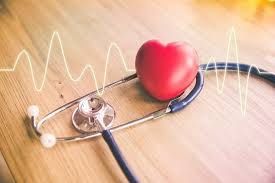As promised, I am back with more of the analysis. Before I jump into the findings, I do want to let you know I have been ruminating a bit about the issue of cannabis testing.
To attempt to state my thoughts succinctly here, until we start testing the cannabis that patients in these types of studies are using, we won’t be doing good science. Granted, we know that THC is responsible for many of the side and and adverse effects of cannabis, but to state that the issue with the cannabis is that it has become so high in THC% is far too reductionistic. There is no specific proof that this one cannabinoid alone is the issue when it comes to the relationship between cannabis and new onset of psychosis. The researchers did state that they opted not to test patients’ cannabis because it provides only a snapshot of a moment of cannabis use in the person’s history.
However, relying on reports of what cannabis is available in the area, because it still in my mind, when I think of the wide variety of cannabis strains available, leaves too much of a gap in getting a handle on what patients are actually consuming. Cannabis is a complex plant with over 500 chemicals, but a few simple tests could provide a wealth of information when it comes to determining if high potency THC cannabis truly does play a role in onset of psychosis, or if something else is going on here.
If a similar study were run again, I would suggest testing the actual cannabis that these psychosis patients had used. Those tests should minimally include the cannabinoid and terpene profiles, in addition to testing for heavy metals and pesticides. While this would have some associated costs, it may at least let the researchers know if the profile of the last cannabis used, which could be very enlightening.
Another consideration with testing cannabis: there is a long history of concern when it comes to the role of heavy metal ingestion and the onset of psychiatric symptoms (Attademo , Bernardini , Garinella , & Compton 2017; .Orisakwe, 2014 ). Cannabis plants can easily become contaminated with heavy metals when grown in soils containing heavy metals. Pesticides can also contaminate cannabis, and the consideration of pesticides as both endocrine disruptors and a possible contributing factor to schizophrenia/.psychosis has also been researched over the years (Maqbool F1, Mostafalou S2, Bahadar H3, Abdollahi M4,, , 2016). What if what we really need to regulate or worry about is not the cannabis plant and THC potency so much as what contaminants are in the plant? In my thought process, this really becomes an ethical question of what we are researching, and what might actually bring harm to patients and vulnerable populations. One of the issues around the end of cannabis prohibition and the beginning of regulation of cannabis should be that people have access to a an herbal medicine that is tested and safe, so people know what they are consuming. Beneficence and autonomy come to mind.
This would encourage cleaner product to be produced and help support people with their own healing quests and/or help them to be a more informed consumer. While I don’t particularly care to draw analogies to alcohol (which comes with its own costly public health concerns namely that alcohol is potentially deadly and cannabis is not), imagine buying alcohol without knowing how strong it is, what is really in it, and so forth. Remember the days of prohibition of alcohol and all of the issues with people making “moonshine”?
And now I will continue to look at the findings.
Participants: Theres seems to be a good split between male/female, with the median age of 36 for control and 31 for case. The median age coupled with the wide range of ages (18-64) included in the study was just a bit concerning, because we know that first time psychosis tends to happen in the early-mid 20’s. The vast majority of all participants were white with at least some college or vocational training and full time employment. It was also clear between case and control, there was much more use of cigarettes, cannabis, and other “drugs” (stimulants, hallucinogens, ketamine, etc) by the case group. Alcohol was not included the summary data table, but in the body of text it states there no difference in alcohol consumption amongst the case vs control groups. And this points to another issue, that it’s really hard to control these types of studies, because most people who are using “drugs” tend to use many different types of substances and it is hard to determine which is having the impact, particularly as we know their can be short term and long term implications. I began to question the issue of poly substance abuse perhaps being a greater issue here then just looking at the % of THC in cannabis, and that lead me to this research….
The International Early Psychosis Association published research by Neilsen et al (2016) that found that alcohol, cannabis, and other drugs increase risk for developing schizophrenia later in life. This was a large retrospective study with the Danish population. The full paper can be accessed here: https://pdfs.semanticscholar.org/1d58/2eaad2f2f9b61f5952f2ecf696bb81a55c7e.pdf Actually, as I ruminate and dig deeper into the Neilsen et al study, I discover it’s having the diagnosis of substance abuse that is correlated with the risk for being diagnosed with schizophrenia 6 fold. Indeed both cannabis and alcohol greatly increased the risk for diagnosis, but Neilsen et al are careful to state that they cannot say alcohol and substance abuse caused the schizophrenia.
Let’s keep in mind with the study being analyzed DiForti et al (hopefully you aren’t getting lost as I move between the primary study and supporting studies I have included!) also found in their population that most people who have a substance abuse disorder do not use one substance alone. In fact the case participants in most of the drug categories used nearly twice as much as the control groups. So is poly substance abuse a factor here?
And that brings me to my next thought: Self-medicating. I don’t see this addressed at all in this article, but were the participants asked about why they used cannabis? Seeing as most people with psychosis have at least 1 year of symptoms prior to being diagnosed with the new onset psychosis, during that time they may be self-medicating or abusing many different substances. My mind starts to question: What if cannabis is actually helping them manage their symptoms, and they would actually would be worse off without it?
And then I come along this little article, that although it’s not in a peer reviewed journal, it clearly explains a possible link between THC, reduction in glutamate, lowered NMDA, weakened CB1 receptors, dopamine receptor D2 being elevated….all this comes together to create hypersensitivity in the limbic system, which may create an environment where schizophrenia could occur. I didn’t see any of this info in the article be analyzed, f I missed it, somebody let me know! There is conflicting research on whether CBD might help with schizophrenia as it changes/modulates CB1 receptors, but we can ‘t forget that CBD % is an important consideration when looking at cannabis plant profiles. https://www.leafly.com/news/health/link-between-cannabis-and-schizophrenia
The leafy article also linked me out to another article looking at causation between cannabis use and psychosis. The authors Louise Arseneault (a1), Mary Cannon (a2), John Witton (a3) and Robin M. Murray
in their meta analysis of five other research articles found that while youthful cannabis use may create a two fold a risk factor for psychosis, and may be responsible for up to 8% of the worlds schizophrenia diagnoses, it also is just one part of a “complex constellation of factors”, and of course vulnerable youth should avoid use of cannabis.
What if people with mental health issues find some relief, for some period of time, from cannabis, that they don’t find from other medications or activities? Why are there so few qualitative studies around cannabis use and self-medication? And why do we have such a stigma associated with self-medication, in much the same we have a stigma around being diagnosed with a mental health issue? The questions go on and on in my mind.
Overall Findings: Okay, let’s get down to the meat of the findings here. The statistical analysis seem logical and well run (I am not a statistician, in fact I found a statistician to work with as I am doing my own quantitive study on an unrelated topic at this time.).
Simply stated, the findings correlate starting use of cannabis before age 15, using high potency cannabis (>10% THC), and daily use as seeming to have the greatest correlation to psychosis (keep in mind causation is not proven here, and almost all of the case participants had also indulged in other substance use at much higher rates than the control group, the issue of possible contamination of ingested cannabis, the lack of knowledge around the full cannabinoid and terpene profile of the cannabis used, and so on).
Conclusions: For me personally, this study did little to change my mind about cannabis and its safety profile, nor change my overall thoughts on safe use of cannabis, including the idea that cannabis should likely not be used recreationally by young people in their teens and early 20’s.
For most people using cannabis medicinally, a high potency THC cannabis is likely not needed, but having safe tested cannabis helps people to make informed decisions about the quality of cannabis they are ingesting and the amount of THC they are consuming. High potency THC cannabis or escalating doses of THC may indeed be risky for some people, most likely young people, those with a predisposition to addiction or history of familial psychosis episodes, those with childhood trauma, those with familial history of substance abuse, and those who currently are poly- substance users.
- Avoid using cannabis (and really all “drugs” and alcohol) until one is in the mid-20’s and the brain is well developed. This does not account for the idea that teens will use substances, so I would say avoid poly-substance use, and cannabis is still generally safer than alcohol (psychosis risks aside). Alcohol is far more readily available for teens to access, also it too is a significant risk factor for psychosis (and of course immediate death if one becomes extremely intoxicated….you can’t die from cannabis ingestion).
- Use tested cannabis that is free from heavy metals, pesticides, fungus, and mold.
- Know the potency of the cannabis medicine you are using. Avoid long term use of “high potency THC cannabis”, or better yet know your THC consumption in mg and limit it to 15 mg max/ day (divided into TID doses), balanced with CBD (up to 20 mg/ day) and terpenes from whole plant medicine (MacCallum & Russo, 2018).
- Take regular cannabis breaks (for the recreational user, avoid daily use and avoid regular use of high potency THC strains; for the medicinal user, consider working with your healthcare provider to determine what a break schedule might look for you, and use lower THC strains if they are still effective at managing symptoms). The website www.healer.com has great info about dosing.
- Medicinal users of cannabis: start low, go slow with the THC dosing. One does not need to be “high” in order to feel relief of symptoms, and with cannabis being a biphasic medication, sometimes less is more. For specific dosing guidance, see MacCallum & Russo (2018).
- For researchers: as prohibition ends and we move toward an era of regulation, let’s find ways to create the best body of evidence available when it comes to the benefits and risks associated with this herbal medication. Let’s base our public policy and educational efforts in sound science. Let’s not jump from correlation to causation, which means we will have to approach the study of this plant with a complexity lens.
References:
Arseneault, L. (a1), Cannon, M., (a2), Witton, J. (a3) & Murray, R.M. (a4 .
(2004). Causal association between cannabis and psychosis: Examination of the evidence. The British Journal of Psychiatry, 184(2), 110-117. https://doi.org/10.1192/bjp.184.2.110
Attademo L1, Bernardini F2, Garinella R3, & Compton MT4.(2017). Environmental pollution and risk of psychotic disorders. Schizophrenia Research, 18, 55-59.
MacCallum, C.A.. & Russo, E.B. (2018). Practical considerations in medical cannabis administration and dosing. European Journal of Internal Medicine, 49 , 12–19.
(Maqbool F1, Mostafalou S2, Bahadar H3, Abdollahi M4,, ,(2016). Review of endocrine disorders associated with environmental toxicants and possible involved mechanisms. Life Sciences, 145, 265-273.
Nielsen, S.M., Toftdahl, N.G., Nordentoft, M., & Hjorthoj, C. (2016). Association between alcohol, cannabis, and other illicit substance abuse and the risk of developing schizophrenia: A nationwide population based register study. Retrieved from https://pdfs.semanticscholar.org/1d58/2eaad2f2f9b61f5952f2ecf696bb81a55c7e.pdf
Orisakwe O. E. (2014). The role of lead and cadmium in psychiatry. North American journal of medical sciences, 6(8), 370-6.





 h call has been made… how will you respond?
h call has been made… how will you respond?